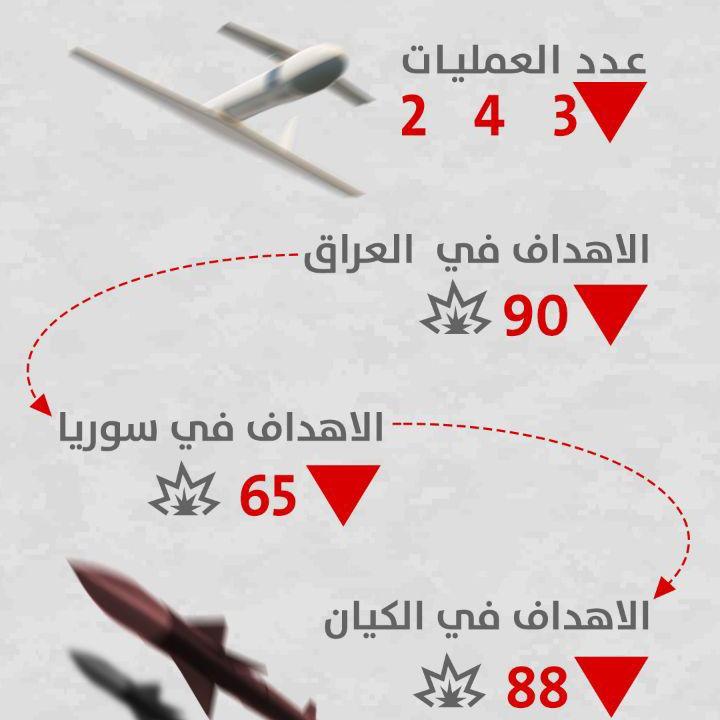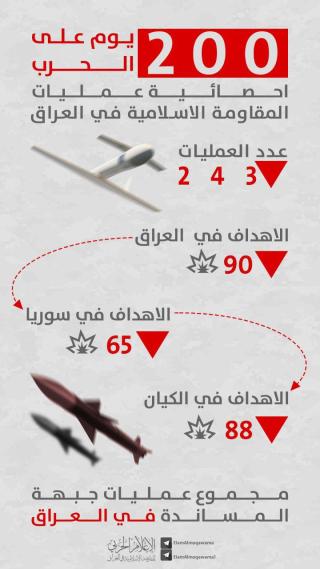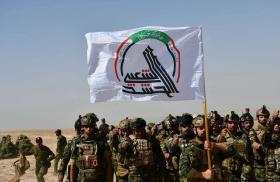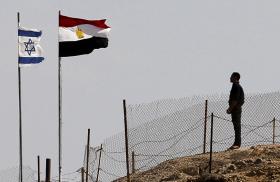
The Islamic Resistance in Iraq Collates a 200-Day Attack Scoreboard

The infographic deviates from recorded IRI claims in important ways, seemingly exaggerating strikes on Israel while downplaying strikes on Syria and Jordan.
On April 25, a Telegram channel belonging to the Islamic Resistance in Iraq (IRI) posted an infographic tallying the attacks claimed by members of the umbrella group since October 17, 2023 (Figure 1). Celebrating the 200th day of the Gaza war, the post claimed that IRI militias had launched 243 operations against American and Israeli targets during this period, including 90 attacks on U.S. sites in Iraq, 65 on U.S. sites in Syria, and 88 on “the Zionist entity” (Israel).
Differences in the Data
Militia Spotlight has likewise tallied IRI claims in our online tracker, and the dissonance between our figures and IRI's infographic are notable:
- IRI claimed 88 attacks on Israel as of April 25, but Militia Spotlight recorded only 59.
- IRI claimed 65 attacks on U.S. targets in Syria, but Militia Spotlight recorded 105.
- IRI's infographic did not specify any Jordan attacks, but we count 4 such attacks on Tower 22/Rukban as of April 25.
- IRI claimed 90 attacks on U.S. targets in Iraq, precisely the same number that Militia Spotlight counted. Interestingly, Militia Spotlight did not count unclaimed attacks on the Baghdad Diplomatic Support Center (BDSC), the U.S. embassy complex, or the Khor Mor gas facility, and IRI did not appear to count these claims either.
Some Theories About Diverging Attack Metrics
Perhaps the most salient difference between IRI’s retrospective infographic and Militia Spotlight’s day-by-day counting of attack claims is that IRI claimed nearly a third more attacks on Israel. This disparity could stem from a number of causes. Perhaps some IRI attacks on Israel were not claimed at the time—though this seems unlikely considering the prestigious and low-cost nature of such attacks against the backdrop of the Gaza crisis. Another possibility is that IRI is trying to recast its mainly anti-U.S. attacks since October as more directly supportive of the Palestinian cause. Perhaps it is so proud of its strikes within Iraq that it cannot lower those (even though they have embarrassed the Iraqi government), so it inflates its non-Iraq claims instead.
The gap between Militia Spotlight's total for Syria claims (105) and IRI's total (65) is more puzzling at first glance. Militia Spotlight has always approached attacks in Syria with special caution because some strikes described as occurring in the vicinity of U.S. bases (especially Conoco and al-Omar) might have been aimed at nearby sites belonging to the Kurdish-led Syrian Democratic Forces (SDF) instead. This largely applies to attacks involving unguided Katyusha-type 107-millimeter rockets or mortars, which could have been undertaken by Iran-backed Syrian Arab militias. Nevertheless, Militia Spotlight has been careful to base most of its counted attacks in Syria on IRI claims, so IRI's motive for downplaying its campaign there is obscure.
One option is that some munitions launched in the direction of al-Tanf were actually en route to Israel, as was the case with at least one U.S. interception at that Syrian base on April 2 (which Militia Spotlight counted as an attempted attack on Israel). If more incidents fit that description, then subtracting some Syria strikes and adding some Israel strikes may be in order—though Militia Spotlight will not recategorize any strikes in the absence of new information.
Another more obvious interpretation is that IRI's infographic is just inaccurate, a conclusion supported by its omission of any Jordan strikes. IRI has no motive to “go easy” on Jordan, especially now that one of its member militias—Kataib Hezbollah—is actively threatening the Hashemite Kingdom. In the past, however, IRI has seemingly tried to be accurate with its metrics to avoid being accused of over-claiming attacks. The reason for the Jordan omission is therefore unclear at the moment, though it likely points to some noteworthy dynamic within the terrorist collective and its media wings that will become more apparent over time.





